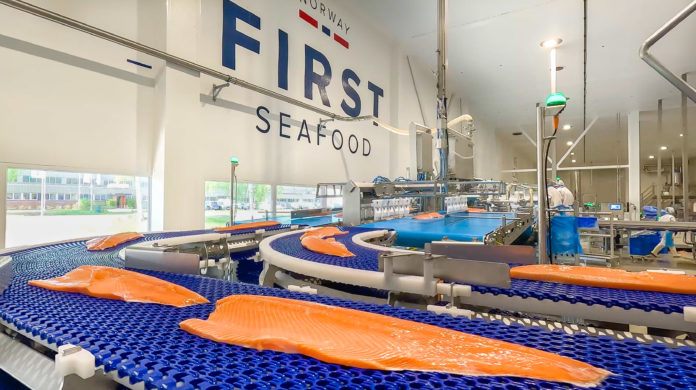The historically high price level persists.
“I’m curious if it will be a 5kg+ price, or if we’ll get a higher price for 6kg+,” a buyer tells SalmonBusiness.
He refers to the following prices (to the producer) for the upcoming week:
3-4 kg NOK 122 per kilo ($11.24/€10.49)
4-5 kg NOK 125 per kilo ($11.50/€10.75)
5-6 kg NOK 127-128 per kilo ($11.68-$11.78/€10.97-€11.08)
This means a new week, the third in a row, with prices above NOK 120 per kilo.
Market Dynamics:
“The airfreight market for 5kg+ has been particularly sluggish this week, with some major players dumping stock and assuming positions. It remains to be seen whether this trend will continue into next week,” commented one market insider.
“The packing plants are closed on Friday and Monday of the following week. This could potentially lead to favorable prices for those holding onto stocks from Thursday’s harvest until the following Tuesday,” he added.
“The market is currently characterized by a scarcity of whole fish, compounded by a prevailing sense of uncertainty,” noted another trader.
“Despite sustained demand in the airfreight markets, prices are not reflecting this reality. European buyers, in particular, are exerting pressure, resulting in a challenging export environment,” he said.
Stability in the Market
“The market remains stable, with potential for slight strengthening in the mid-120s. Our sales have been consistent, indicating a steady demand,” an exporter told SalmonBusiness.
Echoing similar sentiments, other industry players emphasized the stability in prices, with one producer noting, “We haven’t seen much movement in sales. Today, we’ve only managed to secure a sale at NOK 129 for 4-5 kg.”
“In addition, there have been reports of prices at NOK 124 for 3-4 kg and NOK126 for 4-5 kg,” he added.
SalmonBusiness gathers spot prices for salmon every Friday after lunch, tracking fish to be delivered the following week. This process involves contacting multiple entities in the value chain, including farmers, exporters, and importers. At least five independent sources are consulted, though they may not always be publicly disclosed.

